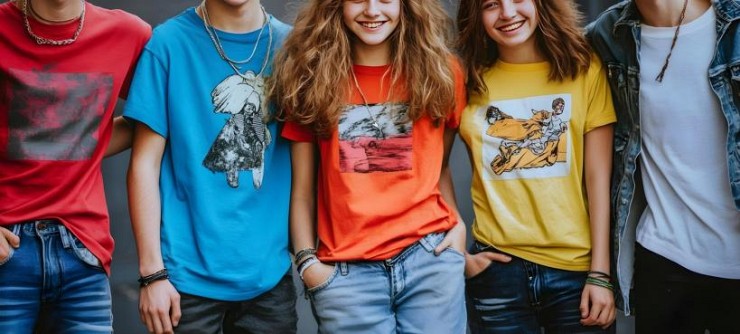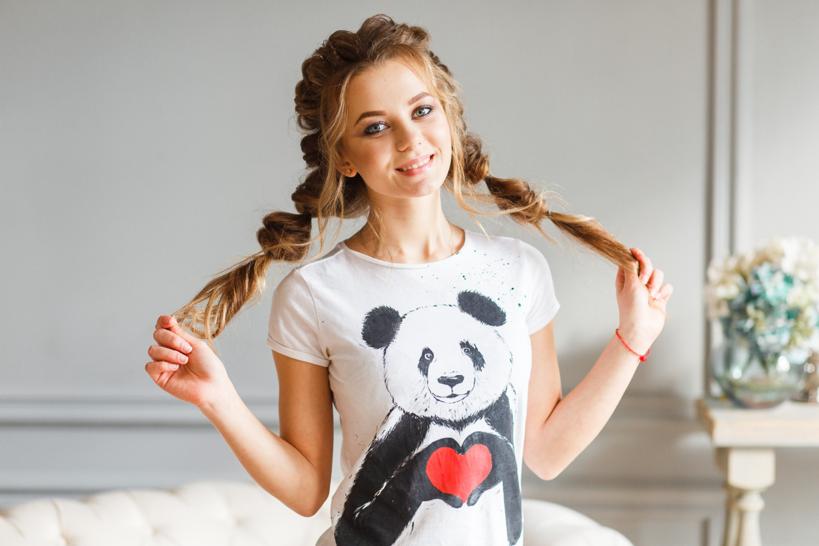How to Create Designs That Translate Well to Screen Printing
Posted on 24 September 2024

There are a number of reasons why screen printing is one of the most popular and versatile methods for creating vibrant, long-lasting designs, with affordability and effectiveness being two of the main ones. But just because screen-printed designs are everywhere, that doesn't mean they're easy to do well. Creating a design that matches your vision as a finished product isn't rocket science either, once you understand the basics.
So, whether you're a seasoned graphic designer or you're designing screen-printed t-shirts for the first time, understanding how to craft designs that translate well to screen printing is the difference between getting your printed apparel noticed for the right reasons and the wrong ones, or not noticed at all. This guide will walk you through the key considerations to keep in mind to ensure your designs are not only visually striking but also optimized for the screen printing process.
1. Understand the Basics of Screen Printing
Before diving into design specifics, it's helpful to understand how screen printing works. The ink is transferred through a mesh screen one colour at a time onto a substrate (like a t-shirt or hoodie) using a stencil.
One of the myths about screen printing is that it's a long, involved, and expensive process. The opposite is true. Screen printing is known for its ability to produce bold, vibrant, and long-lasting prints cost-effectively, which is why you see it used for everything from company logos to intricate artwork.
2. Start with Vector Artwork
When creating a design for screen printing, using vector graphics is one of the few artwork specifications you'll need to follow. Vector files, such as those created in Adobe Illustrator (.AI) or saved as .EPS, are composed of paths instead of pixels. This means they can be resized without losing quality, ensuring that your design remains crisp and clear no matter the size. Raster images (.JPEG, .PNG) are made up of pixels, which can become blurry or pixelated when scaled up. Vector files also allow for easier separation of colours, which, as you now know, is vital for screen printing.
At R&P Prints, we recommend that your graphics and images are a minimum of 300 dpi.
3. Simplify Your Colour Palette
One of the most important factors when designing screen prints is the number of colours you use. While it may be tempting to design a multi-coloured screen print, too many colours can overwhelm the viewer, causing them to miss the message or artwork of your design. Often, less is more—simple, bold designs with one to three colours tend to translate better to screen printing and are more likely to get noticed. If you want to achieve a multi-coloured look without increasing costs, consider using halftones (small dots that gradually increase or decrease in size) to create the illusion of different shades and gradients.
4. Focus on Contrast and Legibility
Contrast is what makes designs readable and noticeable. High contrast between the design elements and the background ensures that your artwork is visible from a distance and looks good on a variety of garment colours. The most basic example is a white design on a black t-shirt compared to a light gray design on a white t-shirt that may fade into the background. Consider the garment colour when designing, and choose ink colours that will provide the necessary contrast.

5. Consider the Print Size and Placement
The size and placement of your design are also important factors. Think about where the design will appear on the garment—chest, back, sleeve, etc.—and how the size will affect its visibility and impact.
A design that looks great on a computer screen might need adjustments to work well on an actual t-shirt. For example, many beginners instinctively try to center a design on the displayable area. There are two problems with this:
- The top of a displayable area on a shirt, for example, is too close to the collar, so centring your design will make it look too high up on the finished shirt.
- The area of focus in your design may not be at its center.
Optimal design placement is usually for the top of the design to be around 3.5 inches below the collar of a shirt.
6. Pay Attention to Line Thickness
Thin lines can be difficult to print and may not appear as crisp as intended. As a general rule, avoid lines thinner than 1 point (approximately 0.0138 inches) to ensure they translate well during the printing process. Similarly, be cautious with fine details and small text—what looks good on screen may not always print clearly. Test your design by printing it out at actual size to see how it holds up.
7. Test and Revise
Before committing to a large print run, it's wise to do a test print of your design. This allows you to see how your design translates from screen to fabric and make any necessary adjustments. Pay close attention to the colours, line quality, and overall placement. If something doesn't look right, don't be afraid to go back to the drawing board and tweak your design. It's better to invest time in perfecting your design upfront than to be disappointed with the final product.
8. Collaborate with Professionals
Finally, if you're unsure about any aspect of your design, don't hesitate to collaborate with professional designers or your screen printer. They can offer valuable insights and suggestions to ensure your design is screen-print-ready.
At R&P Prints, our screen printing experts and in-house graphic designers are available after business hours, eager to answer your questions. We also have a lowest-price-in-Canada guarantee and provide free shipping to anywhere in Canada. These are just a few of the reasons why we're the printers to choose when you're ready to get your logo printed on shirts.
In Short…
Creating designs that translate well to screen printing is a blend of creativity and technical knowledge. By understanding the basics of the screen printing process, simplifying your colour palette, focusing on contrast and legibility, and considering factors like print size and line thickness, you can ensure your designs are eye-catching and production-ready. With these tips in mind, you can design eye-catching screen-printed apparel that stands the test of time.
